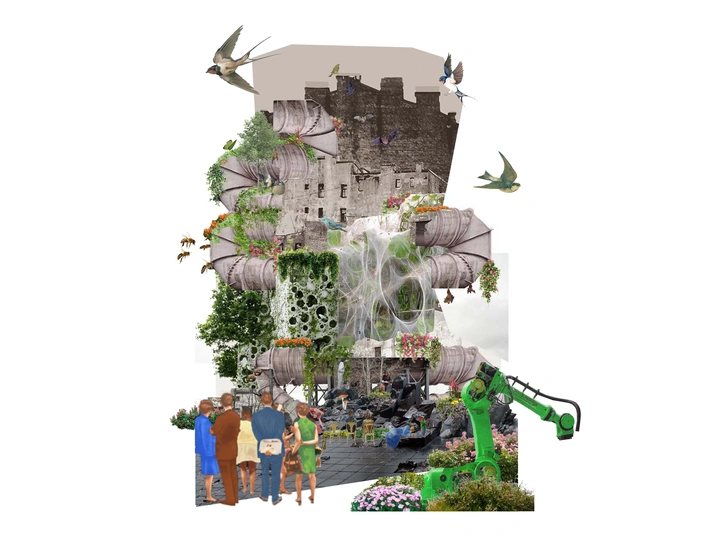Living Skin

Adrià Orriols Camps
Miquel Ruiz Planella
h3o architects is an architecture studio based in Barcelona, founded in 2017 by Adrià Orriols, Joan Gener and Miquel Ruiz. Their practice endeavours to imagine spaces that transcend the ordinary and establish a meaningful connection between people, their contexts and nature, contributing to a more sustainable future. Climate change, social responsibility and the hybridisation of different realities are the themes around which their projects gravitate. In terms of theoretical research, the studio focuses on the architectural membrane or skin: the ecotone between the natural and the artificial, between the social and the environmental. To materialise ideas and projects, h3o uses a variety of formats and media, from the historical study to the catalogue of images which, between them and thanks to the exercise of imagination, weave new spatial possibilities and ways of living.
The studio has experience both in theory -the thesis with honours "Between two worlds: sources and imaginaries of the membrane" conducted at the ETSAB UPC, has been catalogued by Arquia Próxima 2022- as well as experience in the field of practice, winning numerous competitions dealing with renovation and reuse, such as the renovation and extension of the Convent of Les Clarisses in Arenys de Mar into a new library and into the Salvador Espriu centre (currently under construction), the renovation of some of the interiors of Montjuïc Castle in Barcelona (currently at the final design phase), and others with strong social design, such as a social housing block of 155 dwellings in Kop-Dakpark, Rotterdam thanks to winning the Europan 15, or "After Cars", a public space where asphalt is removed to give place to nature and to the collective act of eating.
The membrane deals with the exchanges between the interior and the exterior world. Not only does it act as a material and technological construction, but it is also where the friction between the cultural, political and social tensions of each moment take place. Throughout the 19th and 20th centuries, the discourses where nature disappeared configured the membrane as a thin layer associated with a highly technological world that protects and separates us from the Earth. The current ecological, climatic and social crisis calls for an alternative path that responds, by means of living and changing solutions in time, to the urgent need of reconnecting with a world that also belongs to us.
In the framework of LINA open call, we present an investigation that reflects on the space as a membrane support of life and multi-species. Taking as starting point the thesis “Between two worlds”, the project will address proposals to overcome fossil architecture understood as the limit between the interior and exterior world to bring about new imaginaries of the 21st century membranes.
We propose to investigate the necessary transformation of the built architecture into a living organism through design, new technologies and theoretical and biological knowledge. A research that addresses the living membrane that results from the collective effort of our times: in opposition to the dividing and opaque architecture to which we are used to, the new skin expands, it is provided with life and it can mutate with time.
The aim of this work is to stimulate a debate about the skin as a living space, catalyst of the biological inside-outside dynamics. Converting what until now was a barrier into a meeting place, dynamic and interactive, that embraces the values of the post-anthropocenic paradigm.